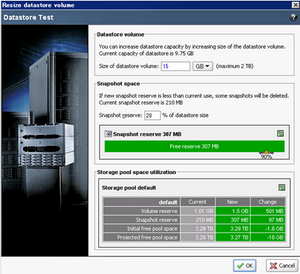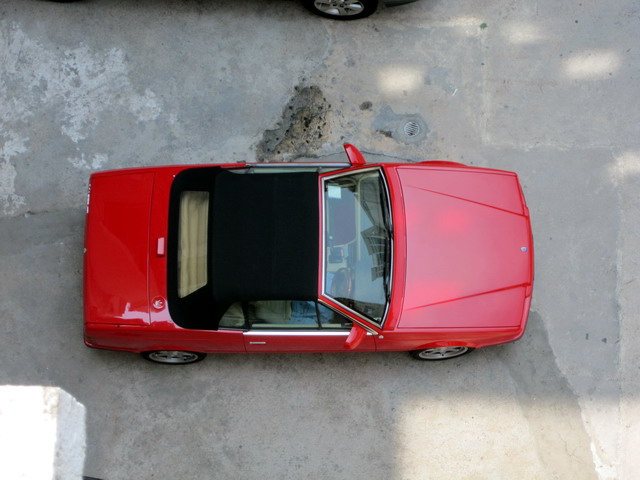 The first release of HIT/VE (Version 3.0.1) was back in April 2011, it did make storage administrator’s life a lot easier particularly if you are managing hundreds of volumes. Well, to be honest, I don’t mind creating volumes, assigning them to ESX host and setting the ACL manually, it only takes a few minutes more. I feel that I need to know every step is correctly carried out which is more important because I can control everything, obviously, I don’t have a huge SAN farm to manage, so HIT/VE is not a life saver tool for me.
The first release of HIT/VE (Version 3.0.1) was back in April 2011, it did make storage administrator’s life a lot easier particularly if you are managing hundreds of volumes. Well, to be honest, I don’t mind creating volumes, assigning them to ESX host and setting the ACL manually, it only takes a few minutes more. I feel that I need to know every step is correctly carried out which is more important because I can control everything, obviously, I don’t have a huge SAN farm to manage, so HIT/VE is not a life saver tool for me.
Today, I came across a new video about the latest HIT/VE, in the video, it shows clearly the version being 3.1.0, which is a new version that has the option of VASA added, too bad it works on vSphere 5.0, but not vSphere 4.1.
However, version 3.1 cannot be found at EQL support web site, I guess it’s only for internal evaluation.
Dell EqualLogic Host Integration Tools for VMware 3.1 — provide customers with enhanced storage visibility and datastore management as well as improved performance and availability through tight integration with VMware vSphere 5, VMware vSphere Storage APIs for Storage Awareness, VMware Storage Distributed Resource Scheduler (SDRS), and VMware vCenter Site Recovery Manager™ 5.
Dell EqualLogic Host Integration Tools for VMware 3.1, Dell EqualLogic Host Integration Tools for Microsoft 4.0, and SAN Headquarters 2.2 software are in beta now and planned for release this year.
Update Sep-13, 2011
EqualLogic has released HIT for VMware V3.1 Early Production Access, I don’t prefer putting any EPA products into production as it might contains bug that will create disaster which no one can guarantee it won’t happen, so I shall skip it and wait till the official release.

![sm9337017020_Patella_Band[1] sm9337017020_Patella_Band[1]](http://www.modelcar.hk/wp-content/uploads/2011/09/sm9337017020_Patella_Band1.jpg) Finally, I started to use Nike Patella Band for my left knee for extra protection. After the game, I rushed to Gigasport and bought another one for my right knee. The Petella Band worths the investment and it’s only HK$62 after discount, they worked pretty well I must say for my knees that’s getting older every day.
Finally, I started to use Nike Patella Band for my left knee for extra protection. After the game, I rushed to Gigasport and bought another one for my right knee. The Petella Band worths the investment and it’s only HK$62 after discount, they worked pretty well I must say for my knees that’s getting older every day. ![51a[1] 51a[1]](http://www.modelcar.hk/wp-content/uploads/2011/09/51a1.jpg) Does it make sense to use “not so reliable” MLC SSD for enterprise storage? Well, it really depends on your situation. Hitachi is the
Does it make sense to use “not so reliable” MLC SSD for enterprise storage? Well, it really depends on your situation. Hitachi is the 

 The first release of HIT/VE (Version 3.0.1) was back in April 2011, it did make storage administrator’s life a lot easier particularly if you are managing hundreds of volumes. Well, to be honest, I don’t mind creating volumes, assigning them to ESX host and setting the ACL manually, it only takes a few minutes more. I feel that I need to know every step is correctly carried out which is more important because I can control everything, obviously, I don’t have a huge SAN farm to manage, so HIT/VE is not a life saver tool for me.
The first release of HIT/VE (Version 3.0.1) was back in April 2011, it did make storage administrator’s life a lot easier particularly if you are managing hundreds of volumes. Well, to be honest, I don’t mind creating volumes, assigning them to ESX host and setting the ACL manually, it only takes a few minutes more. I feel that I need to know every step is correctly carried out which is more important because I can control everything, obviously, I don’t have a huge SAN farm to manage, so HIT/VE is not a life saver tool for me.